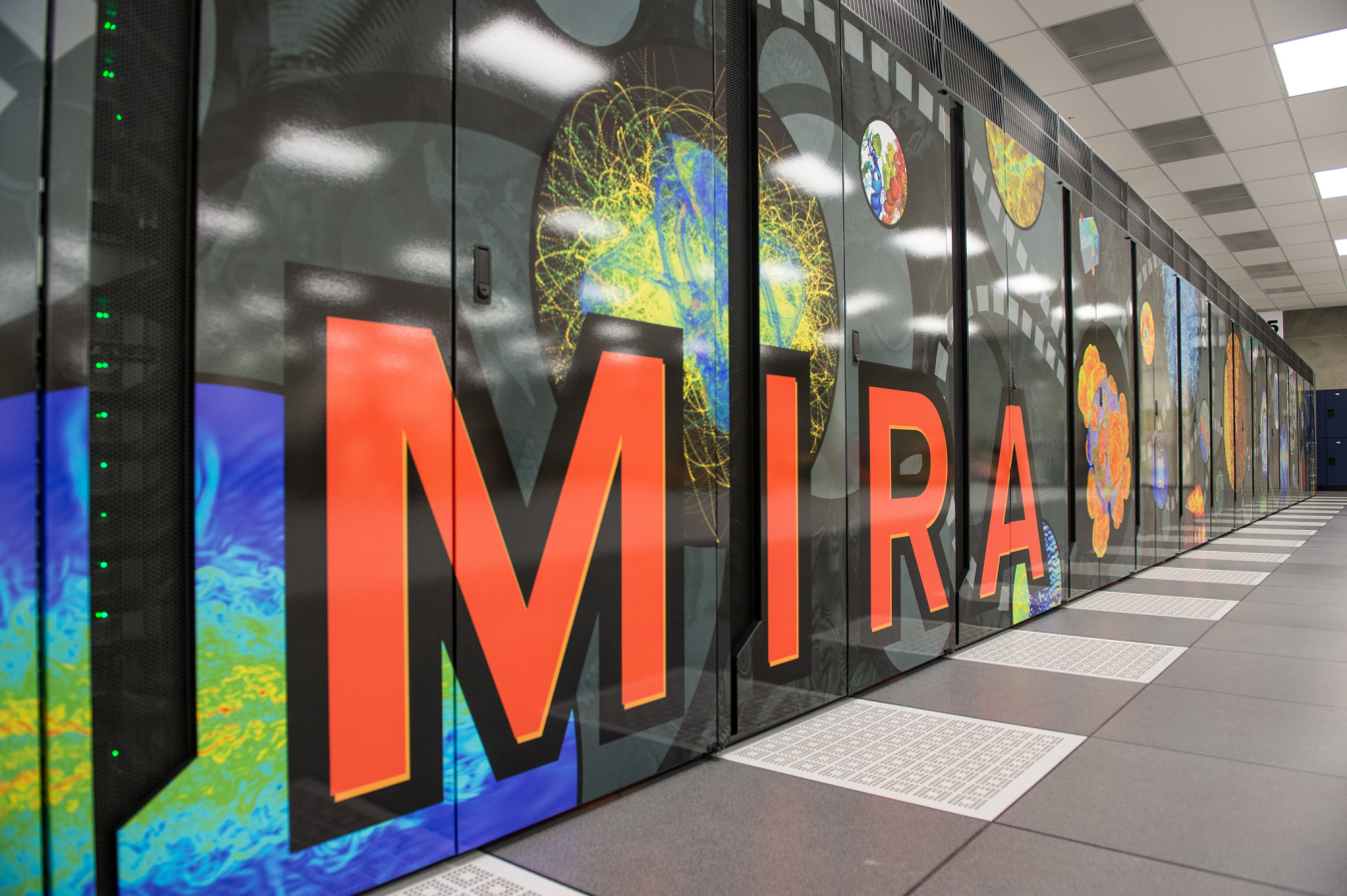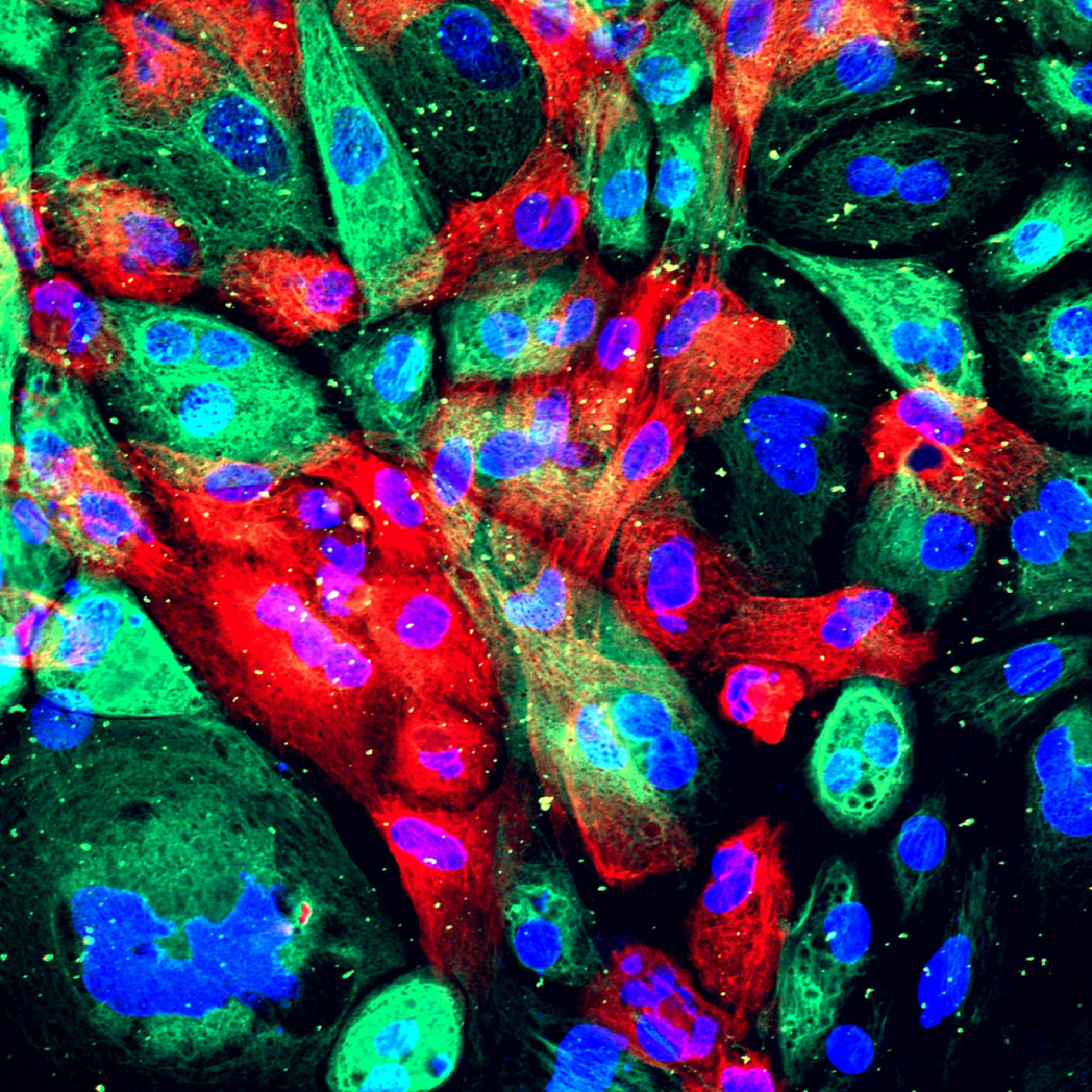
Mira is one of several Energy Department supercomputers. | Photo by Argonne National Laboratory
From harnessing the power of the atom to sequencing the human genome, the Department of Energy has a long history of developing cutting-edge science and technology. Supercomputing is no exception: DOE supercomputers top charts for fastest speeds and fuel incredible science and engineering breakthroughs. Supercomputing is now entering an era of rapid change, with advances in fields such as artificial intelligence (AI) reshaping what’s possible. To stay on the cutting edge, DOE is tackling fresh challenges that will inspire new thinking and drive innovation for supercomputing’s future. One such challenge? Cancer.
In 2015, DOE and the National Cancer Institute (NCI) teamed up to launch the “Joint Design of Advanced Computing Solutions for Cancer (JDACS4C).” The partnership aims to develop next-generation supercomputing technology and accelerate cancer research to enable precision medicine.

Xenograft model of prostate cancer. | Photo by National Cancer Institute, National Institutes of Health
Precision medicine addresses a major challenge faced by doctors and patients: choosing between available courses of treatment when they don’t know which one will work best. Traditionally, doctors say how effective a treatment is on average, but whether it will work for a particular patient depends on their specific biology and history. Precision medicine will let doctors create custom treatments for each patient by drawing on analyses of as much genomic, clinical, and laboratory data as possible.
Realizing precision medicine requires computers more powerful than any today, plus innovative analytical methods: extracting knowledge from the large, multi-modal, complex data sets found in cancer research demands new approaches. That’s why computer scientists from DOE’s national labs are developing new supercomputing tools in scalable AI, big data analytics, and predictive modeling. While developed to advance cancer research, these tools will benefit the broader scientific community and seed innovative directions for how DOE can use supercomputers to advance its mission.
Scientists from DOE and NCI are pursuing three pilot projects that exemplify how uniting cancer research and supercomputing will drive progress in both fields:
- Develop scalable machine learning and predictive modelling tools that will improve the screening process for new cancer drugs and match patients to the best treatments
- Create multi-scale simulations and integrate machine learning with molecular dynamics that will improve our understanding of the underlying causes of cancer
- Advance big data analytics and natural language processing that will support population-based cancer monitoring programs and better understand patient health trajectories
In addition, JDACS4C includes two cross-cutting efforts. The first is developing the CANcer Distributed Learning Environment (CANDLE) to serve as a machine learning environment for DOE’s next-generation supercomputing systems. CANDLE is supported as part of DOE’s Exascale Computing Project (ECP), the Department’s push to deliver exascale systems, which will be 50 times more powerful than today’s leading supercomputers. The second cross-cutting effort is developing Uncertainty Quantification for AI-inspired technology, critical to understanding and using the output of new deep learning techniques.
JDACS4C has incredible potential to transform both medicine and computing. It aligns with the Precision Medicine Initiative of the 21st Century Cures Act and will help bring the central goal of the NCI Cancer Moonshot — accomplishing 10 years’ worth of research in five — within reach. The program is already accomplishing big things in supercomputing. For example, a new natural language processing tool running on Summit can rapidly find relevant information in millions of pages of free-form text and a new hybrid AI-molecular dynamics approach to multiscale physics is running on Sierra. Summit and Sierra are two of the newest DOE supercomputers.
If you’d like to find out more about JDACS4C, this post from the National Cancer Institute provides additional technical information that may be of interest to researchers. Future posts in this series will discuss the science and accomplishments of these efforts — stay tuned!